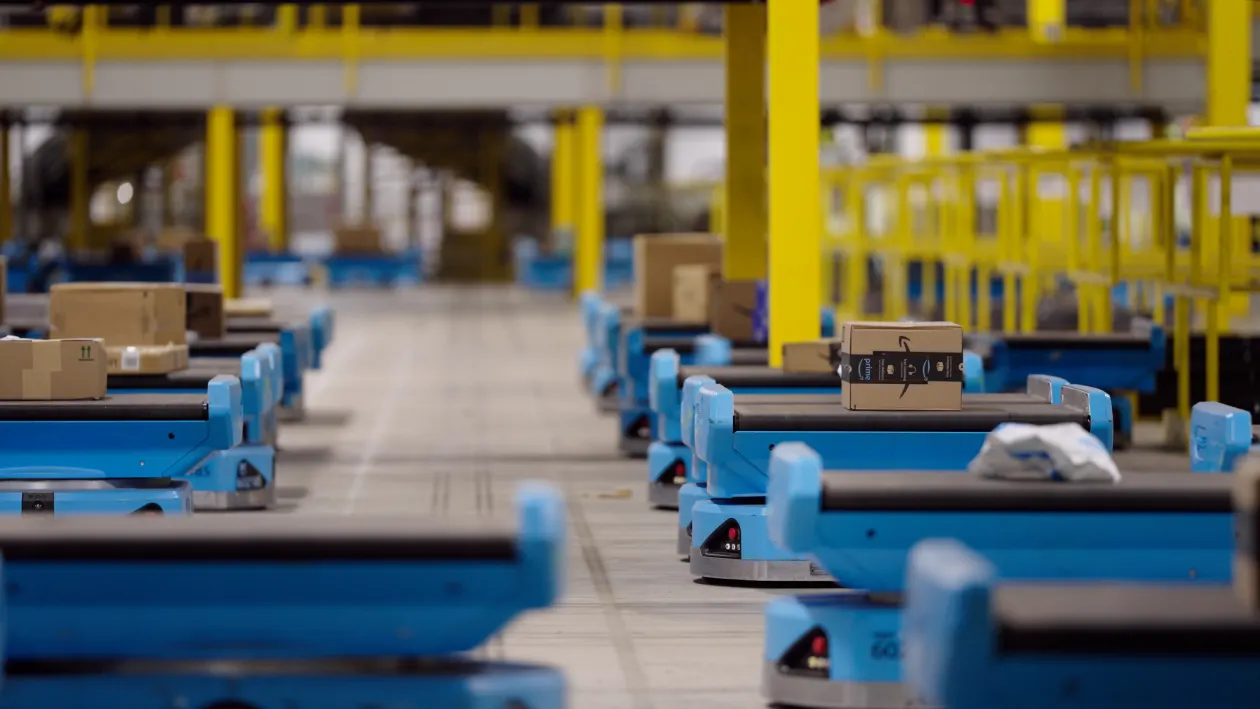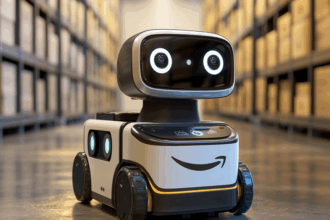In recent years, generative AI in Amazon’s logistics and operations has transformed how the e-commerce giant delivers packages faster and optimizes its supply chain. By leveraging cutting-edge AI technologies, Amazon is enhancing everything from delivery routes to warehouse robots, helping to create a more efficient, sustainable, and customer-focused operation.
Generative AI in Amazon’s Logistics for Faster Deliveries
Generative AI plays a critical role in Amazon’s logistics and operations by optimizing delivery routes and making real-time adjustments. By using AI to predict traffic patterns, road closures, and the best delivery paths, Amazon has significantly increased the speed of its same-day deliveries. This optimization reduces delivery distances, which helps Amazon not only improve delivery times but also reduce carbon emissions, a key part of its sustainability goals.
Smarter Robots in Amazon’s Warehouses
Another key application of generative AI in Amazon’s operations is the integration of smarter robots in its warehouses. These AI-powered robots are designed to coordinate more efficiently with each other and with human workers. By automating tasks like picking, packing, and sorting items, the robots reduce physical strain on employees while increasing productivity. This technology also enables robots to handle items they’ve never encountered before, thanks to the advanced learning capabilities of generative AI.
Generative AI in Supply Chain Optimization
Generative AI is also a game-changer for Amazon’s logistics and operations when it comes to supply chain management. With the ability to forecast demand more accurately, AI ensures that products are placed in optimal warehouse locations, reducing the distance they travel once ordered. This not only speeds up delivery times but also helps Amazon improve its inventory management, cutting down on overstock and shortages.
Improving Employee Ergonomics Through AI
In addition to automating warehouse tasks, generative AI in Amazon’s operations is being used to enhance the working conditions for employees. By analyzing data on item placement and worker movements, AI systems are now ensuring that frequently ordered products are placed at waist height, reducing the need for employees to bend and reach. This focus on ergonomics is helping Amazon reduce workplace injuries and create a safer environment for its workers.
Challenges of Implementing Generative AI in Amazon’s Operations
While the benefits of generative AI in Amazon’s logistics and operations are clear, there are also challenges to consider. One significant concern is the energy consumption required to power these AI systems. As AI models grow more complex, they require more energy, which could conflict with Amazon’s commitment to reducing its carbon footprint. Additionally, some analysts worry that the increasing use of AI and robotics could eventually replace human jobs, though Amazon maintains that these technologies create new opportunities for upskilling employees.
The Future of Generative AI in Amazon’s Logistics
As generative AI in Amazon’s logistics and operations continues to evolve, the future looks promising. Amazon is committed to integrating AI into more aspects of its business, from its delivery systems to personalized shopping experiences. As AI technology becomes even more advanced, we can expect Amazon to further optimize its processes, providing faster, more efficient, and sustainable services to customers worldwide.







